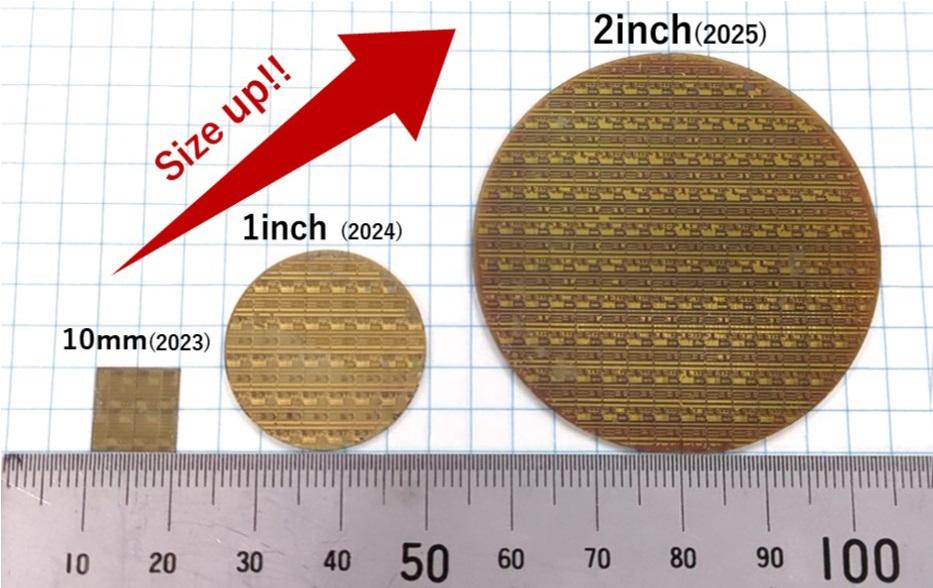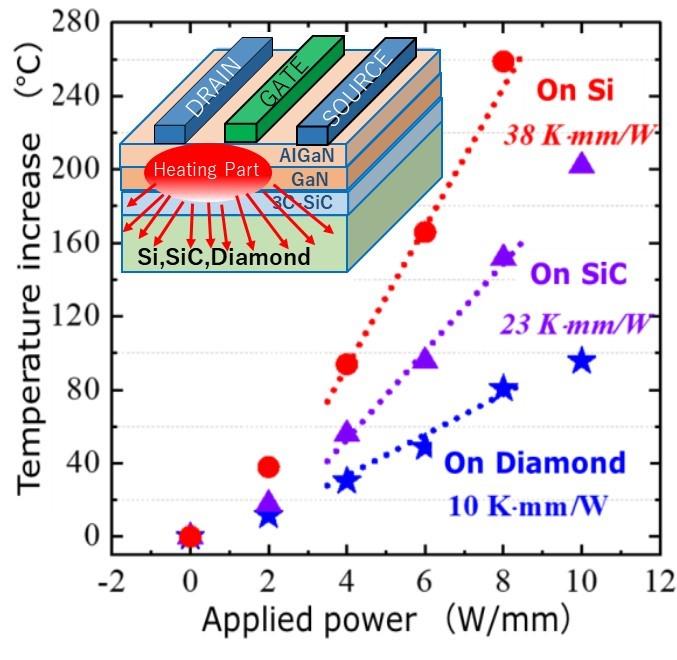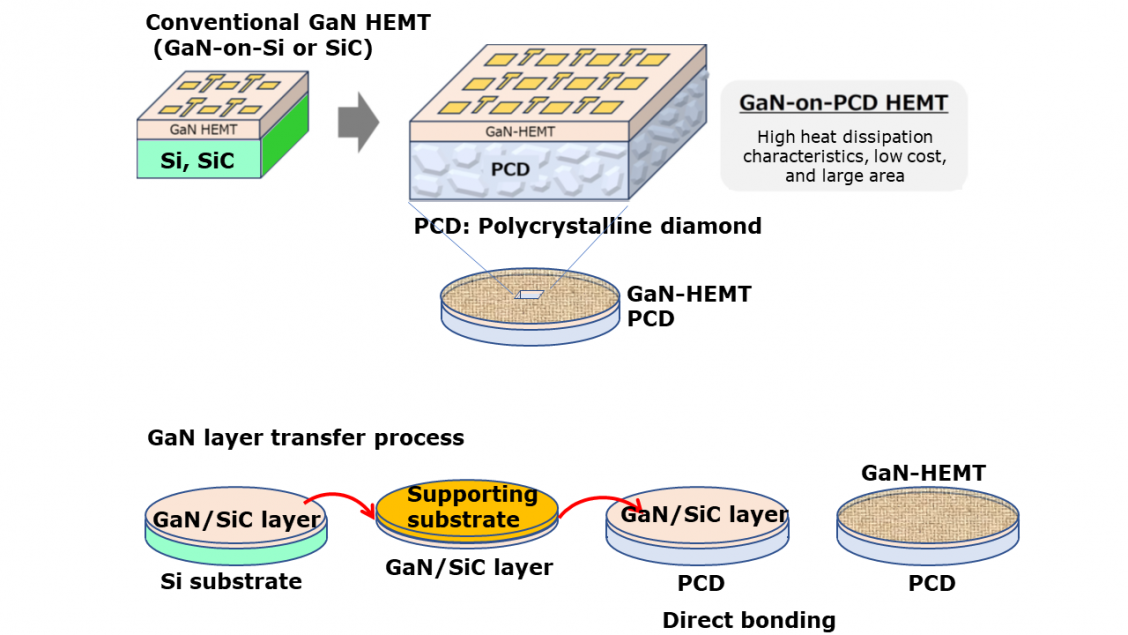30 May 2025
Sumitomo Electric and Osaka Metropolitan University Successfully Fabricate GaN-HEMT on 2-Inch Polycrystalline Diamond Substrate, Enhancing Capacity and Reducing Power Consumption for Core Communication Devices
-
Sumitomo Electric Industries, Ltd.
-
Osaka Metropolitan University
Sumitomo electric Industries, Ltd. and Osaka Metropolitan University (Location: Osaka Prefecture; President: Hiroyuki Sakuragi; hereinafter "OMU") have successfully fabricated a gallium nitride transistor (hereinafter "GaN-HEMT") on a 2-inch polycrystalline diamond (PCD) substrate in a joint research project* with the Japan Science and Technology Agency (JST). This technology is an important step toward achieving higher capacity and lower power consumption of core devices in mobile and satellite communications.


In recent years, as the volume of information in wireless communications has increased, there has been a demand for higher frequencies and higher output powers in high-frequency devices such as GaN-HEMTs. However, the self-heating that occurs during operation limits the devices’ output power, resulting in signal transmission failures and other problems that reduce the performance and reliability of communications. To address these issues, OMU has successfully improved heat dissipation characteristics by utilizing diamond, which has extremely high thermal conductivity, as a substrate for GaN-HEMTs.
Generally, silicon (Si) and silicon carbide (SiC) are used as substrates for GaN-HEMTs, but the thermal conductivity of diamond is about 12 times higher than that of Si and 4 to 6 times higher than that of SiC, so using diamond as a substrate can reduce thermal resistance by a quarter and half, respectively.
Previously, direct bonding to GaN layers without solder or bonding material was difficult due to the large grain size and poor surface roughness (5–6 nm) of polycrystalline diamond. However, Sumitomo Electric has succeeded in directly bonding a GaN layer to a 2-inch polycrystalline diamond substrate by leveraging its diamond substrate polishing technology to reduce the surface roughness to half the conventional level and by integrating OMU’s technology to transfer the GaN layer from the Si substrate onto the polycrystalline diamond. Consequntly, we demonstrated the GaN structure on polycrystalline diamond and its uniform heat dissipation characteristics. The GaN layer used in this study was provided by Air Water Inc. as a GaN/SiC epitaxial layer on a Si substrate.

In the future, we will develop device performance and optimize bonding conditions using 4-inch substrates aimed at mass production, while accelerating the process.
Technologies owned by each organization
OMU
The technology to transfer GaN/SiC epitaxial layers grown in Si substrates to diamond substrates to fabricate GaN-HEMT devices
Sumitomo Electric
Manufacturing and polishing technologies for large polycrystalline diamond substrates that have been used in heat dissipation materials and tool products such as heat sinks and bonding tools
*This work is supported by Adaptable and Seamless Technology transfer Program through Target-driven R&D (A-STEP) from Japan Science and Technology Agency (JST) Japan Grant Number JPMJTR222B.
